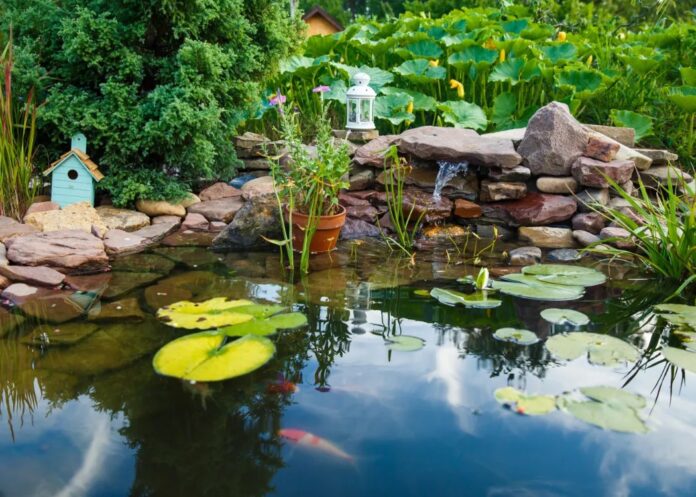A backyard pond should be a peaceful oasis, not a swampy, green nightmare. Murky water can turn a beautiful feature into an eyesore, leaving frustrated pond owners scratching their heads. The good news? Most problems come down to common mistakes that are easy to fix. Let’s look at what causes the mess and how to keep your pond crystal clear.
Key Points:
- Overfeeding fish leads to excess waste.
- Wrong filtration system results in cloudy water.
- Ignoring plant balance creates algae problems.
- Skipping regular cleaning invites murkiness.
- Too many fish overloads the ecosystem.
The Biggest Culprit: Overfeeding Fish
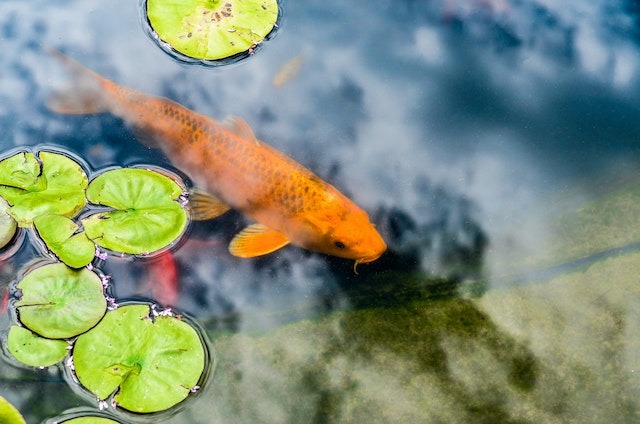
Feeding fish too much might seem harmless, but uneaten food sinks, decays, and releases nutrients that fuel algae growth. More food means more fish waste, adding to the mess. The result? A cloudy, green disaster.
Many people assume fish need constant feeding, but they thrive with controlled portions. Overfeeding causes spikes in ammonia levels, leading to imbalanced water chemistry. Fish also grow larger when overfed, further increasing waste production.
Pro Tip: Feed only what fish can eat in a few minutes. If food still floats after five minutes, it’s too much. Observe feeding habits and adjust accordingly.
Wrong Filtration System: A Recipe for Murky Water
Filters do the heavy lifting in keeping water clean. Choosing the wrong size or type means debris, fish waste, and algae stay in circulation instead of being removed. Without proper filtration, murky water becomes inevitable.
Filtration needs depend on pond size, fish population, and environmental factors. Many owners install undersized filters, which become overwhelmed quickly. Mechanical filters remove debris, while biological filters break down harmful waste.
That Pond Guy offers expert solutions for cleaning, custom construction, and professional maintenance. If your pond looks more like a swamp, Matt Adlington and his team can help restore balance.
Common filtration mistakes you should avoid:
- Using a filter designed for a smaller pond than needed.
- Failing to clean the filter regularly, reducing efficiency.
- Choosing a filter without biological filtration, leading to ammonia buildup.
Ignoring Plant Balance: The Algae Explosion
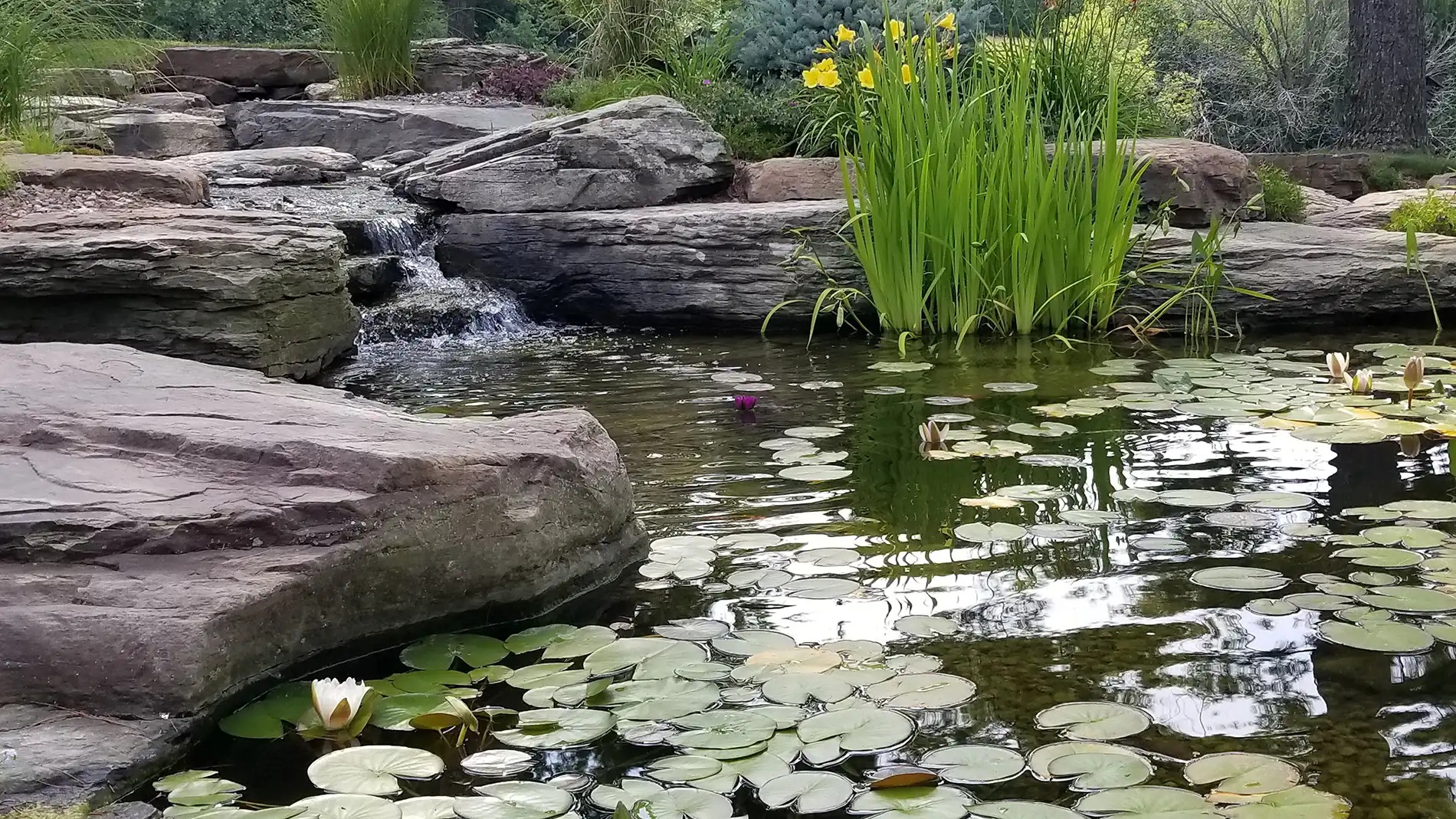
Plants help keep water clear by absorbing excess nutrients. Too few plants mean algae take over. On the other hand, too many can block light, reducing oxygen levels and causing decay.
Balanced plant life promotes a healthier ecosystem. Floating plants provide shade, slowing algae growth, while submerged plants oxygenate the water and compete with algae for nutrients. Without the right mix, an imbalance allows unwanted growth.
Best Plants for Clarity:
- Water lilies: Provide shade and prevent algae growth.
- Hornwort: Acts as a natural filter.
- Anacharis: Oxygenates and absorbs excess nutrients.
Skipping Regular Cleaning: A Fast Track to Murky Water
Neglecting basic upkeep allows debris, fish waste, and algae to accumulate. A neglected pond quickly turns into a cloudy, foul-smelling mess.
Debris decomposes at the bottom, producing harmful gases like methane and ammonia. This not only affects clarity but also creates an unhealthy environment for fish.
How Often to Clean?
- Skim debris weekly.
- Clean filters monthly.
- Partial water changes every few weeks.
Overcrowding: Too Many Fish, Too Many Problems
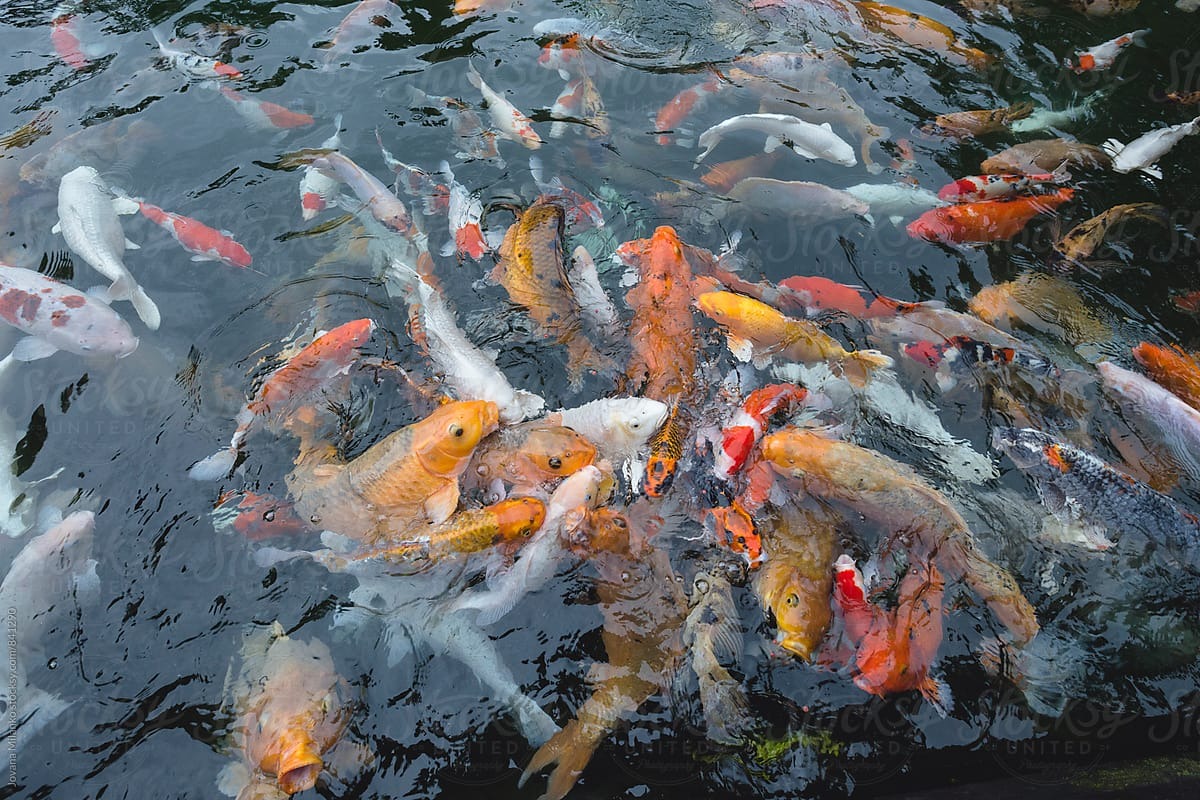
Fish waste adds to murky water issues. Overstocking overwhelms natural filtration, making it impossible to maintain clear conditions.
Fish need space to thrive. Too many fish create an oxygen imbalance, leading to stress and health problems. Murky water often signals an overloaded ecosystem.
General Rule: One inch of fish per 10 gallons of water keeps things balanced.
Poor Aeration: Oxygen Levels Matter
Without proper aeration, water becomes stagnant. Low oxygen levels encourage algae blooms and unhealthy conditions for fish. Stagnant water also promotes mosquito breeding, turning a once-serene feature into a buzzing nuisance.
Fixes for Poor Aeration:
- Install a fountain or waterfall.
- Use an air pump.
- Add oxygenating plants.
Adding Too Many Chemicals: Overcorrection Backfires
Dumping chemicals might seem like an easy fix, but they can harm beneficial bacteria, plants, and fish. Overuse can make problems worse. Some chemicals kill algae but leave decayed material behind, which fuels future algae growth.
Better Solutions:
- Use natural bacteria treatments.
- Control algae with plants and shade.
- Improve filtration instead of relying on quick fixes.
Not Testing Water: The Invisible Problems
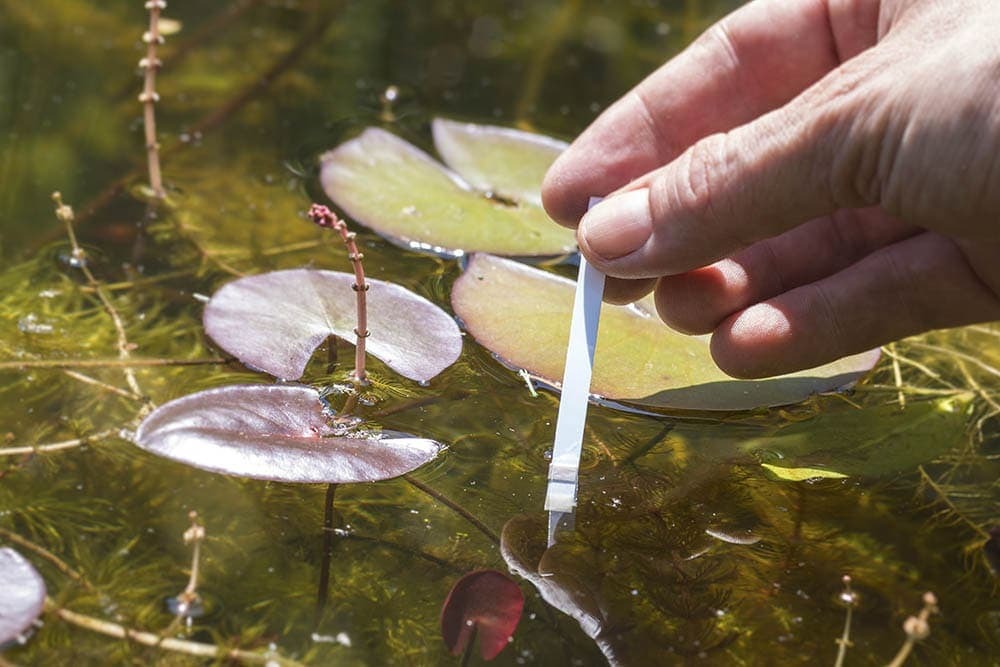
Water may look fine but could be hiding high levels of ammonia, nitrates, or pH imbalances. Without testing, you’re guessing.
Test For:
- Ammonia
- pH balance
- Nitrate and nitrite levels
Introducing the Wrong Fish Species
Not all fish contribute to a clean environment. Some species uproot plants, stir up sediment, and create excessive waste. Choosing fish that help with natural balance prevents unnecessary cleaning efforts.
Best Choices for Clean Water:
- Koi: Active but require strong filtration.
- Goldfish: Less waste production, ideal for smaller spaces.
- Mosquito fish: Keep insect populations down.
Inconsistent Water Changes: A Silent Problem
Water needs partial changes to remove excess nutrients and toxins. Skipping changes leads to slow but steady murkiness.
Recommended change routine:
- Remove 10–20% of water every 1–2 weeks.
- Use dechlorinated or conditioned water.
Neglecting Seasonal Adjustments
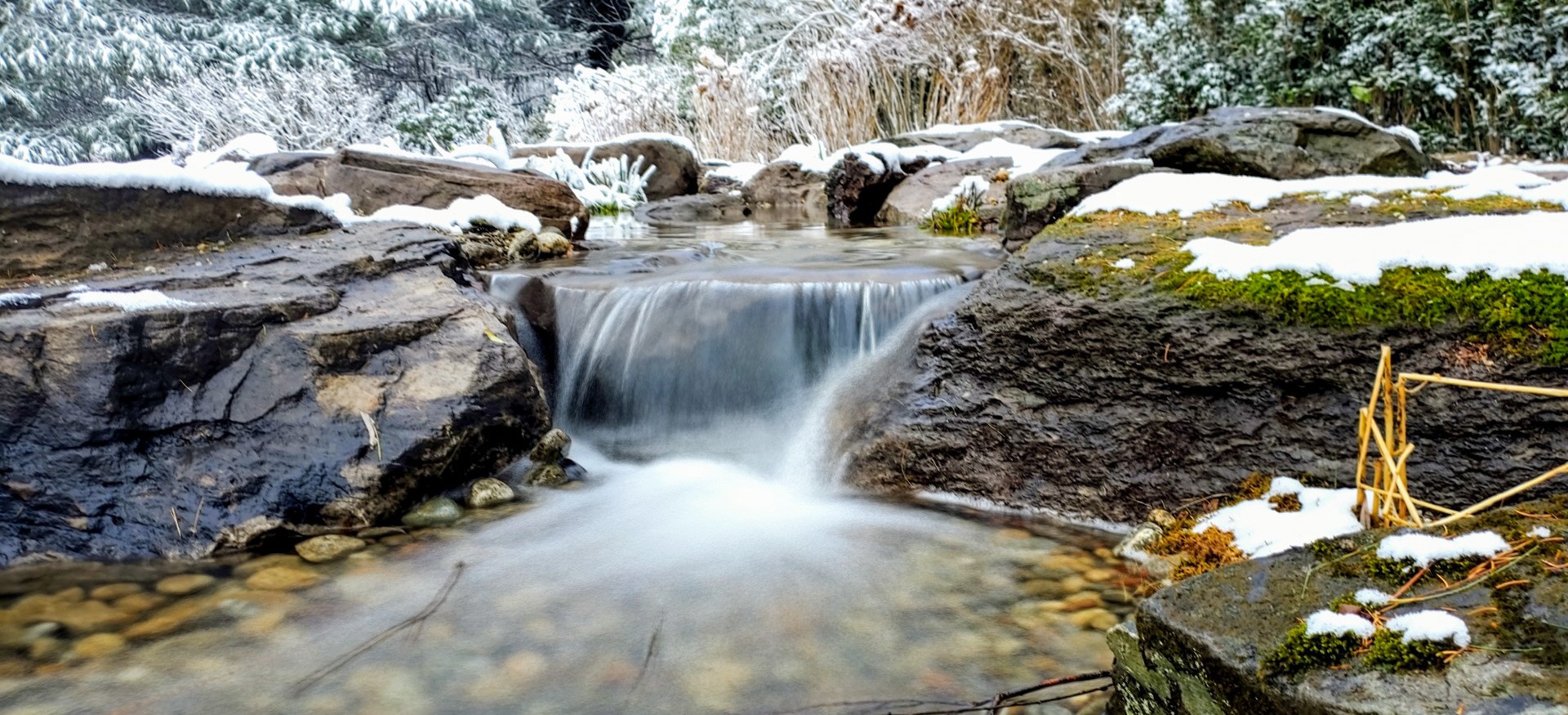
A summer maintenance plan won’t work in winter. Ignoring seasonal changes can lead to imbalances that affect clarity.
Seasonal Care Tips:
- Spring: Clean debris and restart filters.
- Summer: Increase aeration and shade.
- Fall: Remove leaves and excess plants.
- Winter: Reduce feeding and monitor ice formation.
Frequently Asked Questions (FAQs)
How do I clear murky water fast?
Reduce feeding, clean filters, remove debris, and check water chemistry.
Why does my pond smell bad?
Rotting organic material, excess fish waste, or poor aeration could be the cause. Clean debris and boost oxygen levels.
Can I use tap water for a pond?
Yes, but always dechlorinate first. Chlorine harms fish and beneficial bacteria.
How often should I clean my filter?
Monthly cleaning keeps filtration effective. Avoid overcleaning, as beneficial bacteria help maintain balance.
What’s the best way to stop algae growth?
Add more plants, provide shade, use a proper filter, and avoid overfeeding fish.
How do I know if I have too many fish?
Cloudy water, excessive algae, and struggling fish are signs of overcrowding.
Do I need a UV clarifier?
If algae blooms persist despite proper care, a UV clarifier can help control growth.
Conclusion
Murky water often comes down to simple mistakes. Overfeeding, poor filtration, lack of plants, or overcrowding can quickly lead to trouble. Fixing these issues restores clarity and keeps a pond looking great. A little routine care goes a long way in preventing problems before they start.

